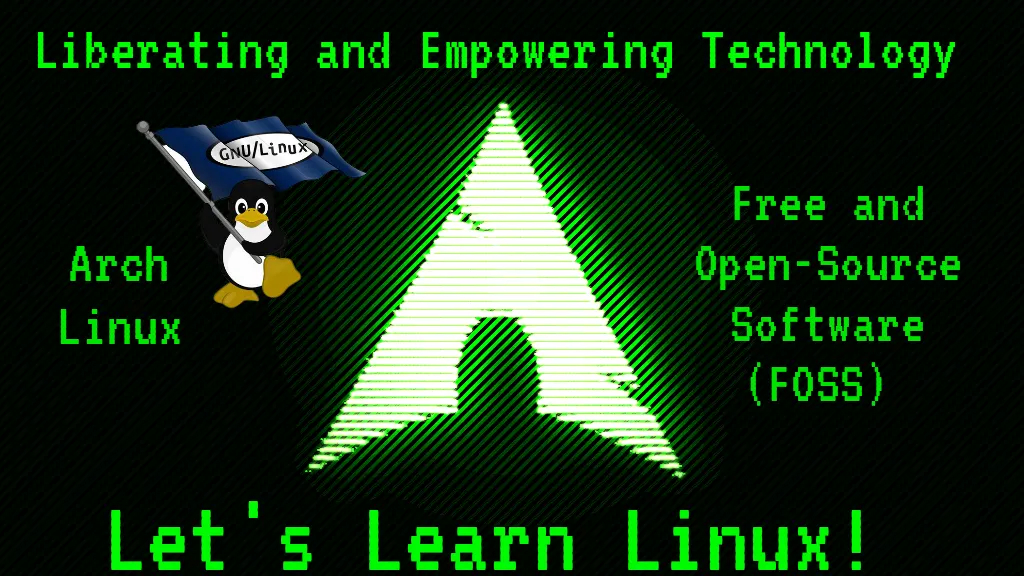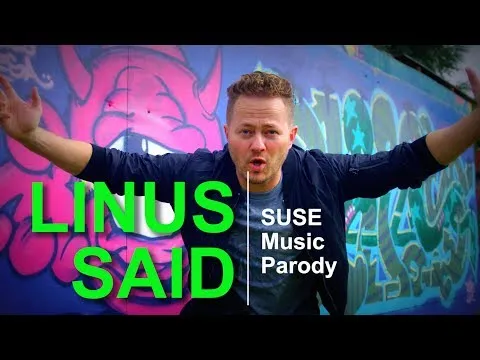



Warm greetings fellow Linux-and-FOSS lovers! 😁🙏💚✨🤙
I've been very much wanting to write about my passion for Linux and Free and Open-Source Software (FOSS) here on Hive (my second great tech love), for several months now. This is the beginning of ongoing installments of regular posts, likely once per week, to introduce, discuss, teach, and share the myriad wonders of the glory that is Linux.

This first post is an introduction, for those that are not familiar, with some of the basics of Linux, and why exactly it's so amazing. Linux is Unix-like, though it does not share code with Unix or its later spinoffs, the BSDs (FreeBSD, OpenBSD, NetBSD, Dragonfly BSD, and the like, which are also quite amazing in their own right).

Almost 32 years ago, on August 25, 1991, Linus Torvalds, a 21-year-old Finnish university student in Helsinki, made this announcement in the comp.os.minix Usenet group (Minix is another Unix-like OS):

Hello everybody out there using minix -
I'm doing a (free) operating system (just a hobby, won't be big and professional like gnu) for 386(486) AT clones. This has been brewing since april, and is starting to get ready. I'd like any feedback on things people like/dislike in minix, as my OS resembles it somewhat (same physical layout of the file-system (due to practical reasons) among other things).
I've currently ported bash(1.08) and gcc(1.40), and things seem to work. This implies that I'll get something practical within a few months, and I'd like to know what features most people would want. Any suggestions are welcome, but I won't promise I'll implement them :-)
Linus (torvalds@kruuna.helsinki.fi)
PS. Yes - it's free of any minix code, and it has a multi-threaded fs. It is NOT portable (uses 386 task switching etc), and it probably never will support anything other than AT-harddisks, as that's all I have :-(.
— Linus Torvalds

Little did Linus know at the time just how huge his 'hobby' would become. One thing that helped propel it into far greater adoption is the integration of user interface (UI) capabilities.

According to Torvalds, Linux began to gain importance in 1992 after the X Window System was ported to Linux by Orest Zborowski, which allowed Linux to support a GUI for the first time.
Wikipedia

There's a really cute, fun, and quite inspiring video made several years ago, which captures the essence of the excitement around the creation of Linux: Linus Said.


So what makes Linux so special, and just why is it so amazingly exciting? Well, in the most basic terms Linux, and free and open-source software in general, give freedom and power back to the people. With Linux, you don't have to adapt to how some company or corporation wants you to use your computer and operating system. Linux gives you complete control over every aspect of your computer and your operating system, and it can be molded into anything that you want in terms of appearance or function.

Linux does not inherently have a graphical user interface, though many different versions of such GUIs (window managers and desktop environments) can very easily be used. What's cool too is that you can have multiple window managers or desktop environments installed, and you can decide which one you want to use before logging into the system.

Because Linux is open source, anybody can review the code to see exactly what it's doing, so nothing can be hidden from view (there are, however proprietary driver 'blobs' in the kernel, to make proprietary hardware function). Also, being open source under a GPL (General Public License), anybody can take the code and use it for free, or even take it and modify it for their own purposes. That's why there are hundreds of different and diverse iterations, or distributions (distros) of Linux. Take a look at the Linux Distribution Timeline to see what I mean.

Linux can be made to run on almost any hardware, and it can easily be optimized to specific CPU architectures. It can also allow users to make full use of the hardware that they have. Every single (disclosed) supercomputer in the world runs Linux. That says a lot I'd say!

I began my journey into world of Linux in the fall of 2011. I had been hacking and modding Android phones (installing custom ROMs, recoveries, kernels, and the like) for a few years when, during one of my attempts at flashing something onto my phone using Windows Vista, my phone became unbootable. It remained in that state for fifteen days. During that time I had the idea come into my mind that it was Windows that was the problem. So I began exploring Linux, which had been on my radar for a fair while. I researched which distribution might be best for me to begin. In the end I settled on Ubuntu, and from the very beginning I was enthralled by its elegance and efficiency. And wouldn't you know it, within a very short time in Ubuntu, I was able to fix my phone quite easily. I was right. It was Windows.

Although I tried out many different distros, I finally settled on Ubuntu, as I could easily set up and do everything that I needed. I stayed with Ubuntu for six years. In September of 2017, when I was living in Oregon for a short time, I explored the marvels that is Arch Linux. In truth I cheated a bit, as the official way to install Arch is via the command line. Although I was pretty good with Linux, at the time I felt daunted by this, so I installed a distro called Antergos (now defunct), which was Arch but with a graphical installer. Once I actually began using it, however, I fell quickly and deeply in love with Arch, and I decided that I wanted to come to know and use it very well, which included installing it the official way, in a terminal.

I ended up installing Arch three times. The first installation was what used be Antergos, but which I converted to straight Arch, and two other installations which I did the official command-line way. All three of these installations are still completely functional. I have them on three separate hard drives that I swap in and out of my laptop. I have a hard-drive cloner and three identical backup hard drives, to which I clone my three Arch installs after any notable changes.

All of my three Arch installs are over five years 'old' , the 'oldest' is close to five and a half. Arch follows a rolling release model, so there are no versions, it's just always up to date!

I was using and loving Arch for three and a half years when my old 2010 Dell Latitude E6410 finally died (I live off-grid way out in the jungle now, which is not easy for computers). I safely stored my hard drives, and kept my eyes open for a suitable replacement laptop. Between me being picky about hardware, and not having sufficient financial resources much of the time, I was without a computer for more than a year and a half. Arch was important to me, and I really missed working with it, so at the beginning of this year, I made getting another laptop happen! My new computer is a 2021 Dell Inspiron 15 3511. It took me twenty days to figure out how to get my hard drives to boot with this new system's UEFI firmware, but in the end I succeeded, as I always do (I'm a very resourceful, intuitive, and tenacious fellow)!

I am so ridiculously grateful to finally have another laptop with which I can work with Arch once again! This first post got a bit longer than I expected, so I think here's good place to stop for now. Each week I'll choose a new topic of focus. I want to slowly and gently teach people how to use Linux in general, and Arch Linux specifically.

I hope that this first installment was interesting for my readers. I'm excited about unfolding these posts over time. I think this is going to be fun! Until next week! 😁 🙏 💚 ✨ 🤙

All images were taken with my Motorola G Power Android Phone or are screen shots from my laptop.

Thank you all so much who have helped me get to where I am today, and allowing me to share more of the beauty and magic from my life and my world with you, and for your continuous appreciation and support! I am truly deeply grateful! 😁🙏💚✨🤙

If you'd like to find me on other alternative platforms where I have accounts (I spend most of my time here on Hive), click on this signature image below to go to my LinkTree page.
If you'd like to send me a BTC Lighting Tip (made possible by the fantastic work of brianoflondon on @v4vapp), just scan the QR image below. 👇

Sources
Signature image created by @doze, and the dividers made by @thepeakstudio, with all tweaked to their present form by me.
Banner image created by me using Polish, with the Arch Linux logo converted into ASCII art, and Tux the Linux Peguin created by Larry Ewing.


